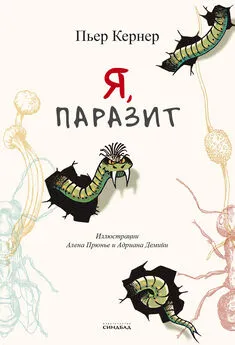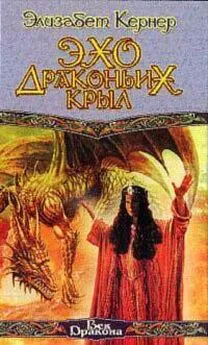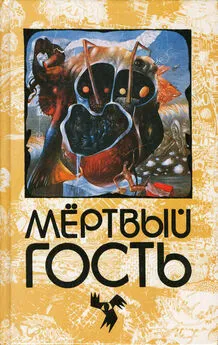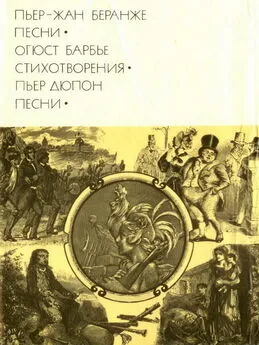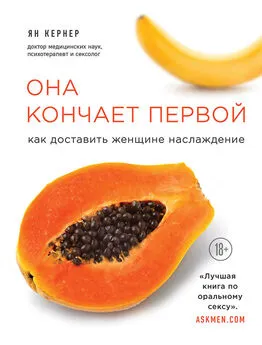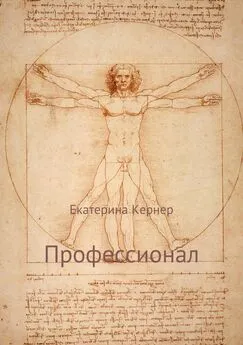Пьер Кернер - Я, паразит
- Название:Я, паразит
- Автор:
- Жанр:
- Издательство:Синдбад
- Год:2021
- Город:Москва
- ISBN:978-5-00131-313-7
- Рейтинг:
- Избранное:Добавить в избранное
-
Отзывы:
-
Ваша оценка:
Пьер Кернер - Я, паразит краткое содержание
Эта книга максимально доступным языком, с использованием множества примеров рассказывает о том, чем занимается наука паразитология. Автор знакомит читателя с огромным разнообразием паразитических видов, рассказывает, на каких принципах строится их стратегия выживания, какими последствиями для организма хозяина оборачивается «сожительство» с ними, как происходит их размножение и даже… какие преимущества подчас получает тот, кого паразит выбрал и использует в качестве своей кормовой базы.
Мы должны быть благодарны паразитам: они приняли непосредственное участие в эволюции человека и внесли неоценимый вклад в формирование нашего вида, утверждает Пьер Кернер.
Я, паразит - читать онлайн бесплатно ознакомительный отрывок
Интервал:
Закладка:
Tyson, E. (1683). Lumbricus Latus, or a Discourse Read before the Royal Society of the Joynted Worm, Wherein a great Many Mistakes of Former Writers concerning It, are Remarked; Its Natural History from More Exact Observations is Attempted; and the Whole Urged, as a Difficulty against the Doctrine of Univocal Generation. Philosophical Transactions (1683–1775), 13, 113–144.
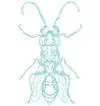
Общие сведения о паразитоидах:
Godfray, H. C. J. (2004). Parasitoids. Curr Biol , 14(12), R456. doi: 10.1016/j.cub.2004.06.004.
Хромосомы-паразиты:
Aldrich, J. C., & Ferree, P. M. (2017). Genome Silencing and Elimina-tion: Insights from a «Selfish» B Chromosome. Front Genet , 8, 50. doi: 10.3389/fgene.2017.00050.
Werren, J. H. (1980). Sex ratio adaptations to local mate competi-tion in a parasitic wasp. Science , 208(4448), 1157–1159. doi: 10.1126/science.208.4448.1157.
Werren, J. H., & Stouthamer, R. (2003). PSR (paternal sex ratio) chro-mosomes: the ultimate selfish genetic elements. Genetica , 117(1), 85–101.
Личинки-солдаты копидосом:
Cruz, Y. P. (1981). A sterile defender morph in a polyembryonic hyme-nopterous parasite. Nature , 294(5840), 446–447. doi: 10.1038/294446a0.
Uka, D., Takahashi-Nakaguchi, A., Yoshimura, J., & Iwabuchi, K. (2013). Male soldiers are functional in the Japanese strain of a polyembryonic wasp. Sci Rep , 3, 2312. doi: 10.1038/srep02312.
Zhurov, V., Terzin, T., & Grbić, M. (2004). Early blastomere determines embryo proliferation and caste fate in a polyembryonic wasp. Nature , 432(7018), 764–769. doi: 10.1038/nature03171.
Самые маленькие осы в мире:
Huber, J. T., & Noyes, J. (2013). A new genus and species of fairyfly, Tinkerbella nana (Hymenoptera, Mymaridae ), with comments on its sister genus Kikiki, and discussion on small size limits in arthropods. J Hymenopt Res , 32, 17–44. doi: 10.3897/jhr.32.4663.
Mockford, E. L. (1997). A New Species of Dicopomorpha (Hymenop-tera: Mymaridae ) with Diminutive, Apterous Males. Ann Entomol Soc Am , 90(2), 115–120. doi: 10.1093/aesa/90.2.115.
Афелиниды:
Hunter, M. S., & Woolley, J. B. (2001). Evolution and behavioral ecology of heteronomous aphelinid parasitoids. Annu Rev Entomol, 46, 251–290. doi: 10.1146/annurev.ento.46.1.251.
Walter, G. H. (1983). ‘Divergent male ontogenies’ in Aphelinidae (Hymenoptera: Chalcidoidea ): a simplified classification and a suggested evolutionary sequence. Biol J Linn Soc , 19(1), 63–82. doi: 10.1111/j.1095–8312.1983.tb00777.x.
Williams, T., & Polaszek, A. (1996). A re-examination of host relations in the Aphelinidae (Hymenoptera: Chalcidoidea ). Biol J Linn Soc, 57(1), 35–45. doi: 10.1111/j.1095–8312.1996.tb01694.x.
Галлообразующие осы:
Joseph, M. B., Gentles, M., & Pearse, I. S. (2011). The parasitoid commu-nity of Andricus quercuscalifornicus and its association with gall size, phenology, and location. Biodiversity and Conservation , 20(1), 203–216. doi: 10.1007/s10531-010-9956-0.
Stone, G. N., & Cook, J. M. (1998). The structure of cynipid oak galls: patterns in the evolution of an extended phenotype. Proc R Soc Lond [Biol] , 265(1400), 979–988. doi: 10.1098/rspb.1998.0387.
Stone, G. N., Schonrogge, K., Atkinson, R. J., Bellido, D., & Pujade-Villar, J. (2002). The population biology of oak gall wasps (Hymenop-tera: Cynipidae ). Annu Rev Entomol, 47, 633–668. doi: 10.1146/annurev. ento.47.091201.145247.
Бактерицидный вирус тли на страже:
Moran, N. A., Degnan, P. H., Santos, S. R., Dunbar, H. E., & Ochman, H. (2005). The players in a mutualistic symbiosis: insects, bacteria, viruses, and virulence genes. Proc Natl Acad Sci U S A , 102(47), 16919-16926. doi: 10.1073/pnas.0507029102.
Moran, N. A., & Dunbar, H. E. (2006). Sexual acquisition of beneficial symbionts in aphids. Proc Natl Acad Sci U S A , 103(34), 12803–12806. doi: 10.1073/pnas.0605772103.
Oliver, K. M., Noge, K., Huang, E. M., Campos, J. M., Becerra, J. X., & Hunter, M. S. (2012). Parasitic wasp responses to symbiont-based defense in aphids. BMC Biol , 10, 11. doi: 10.1186/1741-7007-10-11.
Oliver, K. M., Russell, J. A., Moran, N. A., & Hunter, M. S. (2003). Facultative bacterial symbionts in aphids confer resistance to para-sitic wasps. Proc Natl Acad Sci U S A , 100(4), 1803–1807. doi: 10.1073/pnas.0335320100.
Металл яйцекладов осы:
Polidori, C., García, A. J., & Nieves-Aldrey, J. L. (2013). Breaking up the wall: metal-enrichment in Ovipositors, but not in mandibles, co-varies with substrate hardness in gall-wasps and their associates. PLoS ONE , 8(7), e70529. doi: 10.1371/journal.pone.0070529.
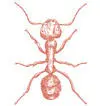
Неисчерпаемый источник информации о муравьях:
http://www.myrmecofourmis.fr/.
Две компиляции важнейших статей о муравьях и их паразитах:
Lachaud, J.-P., Lenoir, A., & Hughes, D. P. (2013). Ants and Their Parasites 2013. Psyche: A Journal of Entomology , 2013, doi: 10.1155/2013/264279.
Lachaud, J.-P., Lenoir, A., & Witte, V. (2012). Ants and Their Parasites. Psyche: A Journal of Entomology , 2012, doi: 10.1155/2012/342157.
Методы химической защиты у муравьев:
Bos, N., Sundström, L., Fuchs, S., & Freitak, D. (2015). Ants medicate to fight disease. Evolution , 69(11), 2979–2984. doi: 10.1111/evo.12752.
Brütsch, T., Jaffuel, G., Vallat, A., Turlings, T. C., & Chapuisat, M. (2017). Wood ants produce a potent antimicrobial agent by applying formic acid on tree-collected resin. Ecol Evol , 7(7), 2249–2254. doi: 10.1002/ece3.2834.
Castella, G., Chapuisat, M., & Christe, P. (2008). Prophylaxis with resin in wood ants. Animal Behaviour , 75(4), 1591–1596. doi: 10.1016/j. anbehav.2007.10.014.
Schlüns, H., and Crozier, R. H. Molecular and chemical immune defenses in ants (Hymenoptera: Formicidae ). Myrmecological News, 2009, 12, 237–249.
Moreau, S. J. (2013). «It stings a bit but it cleans well»: venoms of Hyme-noptera and their antimicrobial potential. J Insect Physiol, 59(2), 186–204. doi: 10.1016/j.jinsphys.2012.10.005.
Муравьиные туалеты:
Czaczkes, T. J., Heinze, J., & Ruther, J. (2015). Nest etiquette-where ants go when nature calls. PLoS ONE , 10(2), e0118376. doi: 10.1371/journal. pone.0118376.
Farji-Brener, A. G., Elizalde, L., Fernández-Marin, H., & Amador-Vargas, S. (2016). Social life and sanitary risks: evolutionary and current ecological conditions determine waste management in leaf-cutting ants. Proc Biol Sci , 283(1831). doi: 10.1098/rspb.2016.0625.
Акустический миметизм у бабочек:
Barbero, F., Bonelli, S., Thomas, J. A., Balletto, E., & Schönrogge, K. (2009). Acoustical mimicry in a predatory social parasite of ants. J Exp Biol , 212(24), 4084–4090. doi: 10.1242/jeb.032912.
Barbero, F., Thomas, J. A., Bonelli, S., Balletto, E., & Schönrogge, K. (2009). Queen ants make distinctive sounds that are mimicked by a butterfly social parasite. Science , 323(5915), 782–785. doi: 10.1126/science.1163583.
Devries, P., Cocroft, R.B., Thomas, J. (1993). Comparison of acoustical signals in Maculinea butterfly caterpillars and their obligate host Myrmica ants. Biol J Linn Soc , 49(3), 229–238. doi: 10.1111/j.1095–8312.1993. tb00902.x.
Миметизм яиц у палочников:
Goldberg, J., Bresseel, J., Constant, J., Kneubuhler, B., Leubner, F., Michalik, P., & Bradler, S. (2015). Extreme convergence in egg-laying strategy across insect orders. Sci Rep , 5, 7825. doi: 10.1038/srep07825.
Stanton, A. O., Dias, D. A., & O’Hanlon, J. C. (2015). Egg Dispersal in the Phasmatodea : Convergence in Chemical Signaling Strategies Between Plants and Animals? J Chem Ecol , 41(8), 689–695. doi: 10.1007/s10886-015-0604-8.
Поведенческие манипуляции паразитами ритмов хозяина:
Botnevik, C. F., Malagocka, J., Jensen, A. B., & Fredensborg, B. L. (2016). Relative Effects of Temperature, Light, and Humidity on Clinging Behavior of Metacercariae-Infected Ants. J Parasitol , 102(5), 495–500. doi: 10.1645/16-53.
de Bekker, C., Will, I., Hughes, D. P., Brachmann, A., & Merrow, M. (2017). Daily rhythms and enrichment patterns in the transcriptome of the behavior-manipulating parasite Ophiocordyceps kimflemingiae. PLoS ONE , 12(11), e0187170. doi: 10.1371/journal.pone.0187170.
Reece, S. E., Prior, K. F., & Mideo, N. (2017). The Life and Times of Parasites: Rhythms in Strategies for Within-host Survival and Between-host Transmission. J Biol Rhythms, 32(6), 516–533. doi: 10.1177/0748730417718904.
Поведенческий иммунитет:
Daly, E. W., & Johnson, P. T. (2011). Beyond immunity: quantifying the effects of host anti-parasite behavior on parasite transmission. Oecologia , 165(4), 1043–1050. doi: 10.1007/s00442-010-1778-y.
de Roode, J. C., & Lefèvre, T. (2012). Behavioral Immunity in Insects. Insects , 3(3), 789–820. doi: 10.3390/insects3030789.
Flemming, A. (2017). Insect Immunity: Mechanism of adaptive immu-nity found in the fruitfly. Nat Rev Immunol , 17(5), 278–279. doi: 10.1038/nri.2017.44.
Gray, B., Jacobs, A. C., Mora, A. B., & Zuk, M. (2012). Antiparasite behavior. Curr Biol , 22(8), R255-257. doi: 10.1016/j.cub.2012.02.024.
Hamilton, C., Lejeune, B. T., & Rosengaus, R. B. (2011). Trophal-laxis and prophylaxis: social immunity in the carpenter ant Camponotus pennsylvanicus . Biol Lett, 7(1), 89–92. doi: 10.1098/rsbl.2010.0466.
Hart, B. L. (2011). Behavioural defences in animals against pathogens and parasites: parallels with the pillars of medicine in humans. Philos Trans R Soc Lond B Biol Sci , 366(1583), 3406–3417. doi: 10.1098/rstb.2011.0092.
Манипулирование грибами Cordiceps:
Fredericksen, M. A., Zhang, Y., Hazen, M. L., Loreto, R. G., Mangold, C. A., Chen, D. Z., & Hughes, D. P. (2017). Three-dimensional visuali-zation and a deep-learning model reveal complex fungal parasite networks in behaviorally manipulated ants. Proc Natl Acad Sci U S A , 114(47), 12590-12595. doi: 10.1073/pnas.1711673114.
Читать дальшеИнтервал:
Закладка:
